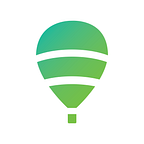Using human-centered methodologies to better understand people and deliver improved products and services
Creating solutions that make sense to the people who are going to use them is crucial, and knowing the steps to reach the best decision is too. It is necessary to be creative, and organized, understand what is necessary and what is not, and above all, always think about who will use the solution to be developed, that is, human-centered.
Setting goals, aligning expectations, defining activities together and keeping people engaged can be challenging. A creative way to approach problem-solving is through dynamics and methodologies that boost engagement and help to find answers — always keeping creativity in evidence — . This is what human-centered design is all about.
I highly recommend the human-centered methodologies that Ideo offers, completely for free, called Design Kit Methods. These materials can be used by the most diverse types of professionals, such as marketing teams, designers, and Human Resources. According to Ideo, human-centered design is “a practical, repeatable approach to arriving at innovative solutions. Think of these Methods as a step-by-step guide to unleashing your creativity, putting the people you serve at the center of your design process to come up with new answers to difficult problems”. This is the link to check the platform out.
The Design Kit Methods material is divided into 3 categories: Inspiration, Ideation, and Implementation.
The Inspiration section is the moment to learn, open horizons, understand people, and think about creative possibilities. In this part you will find 23 different dynamics guided by these questions:
- How do I conduct an interview?
- What tools can I use to understand people?
- How do I get started?
The Ideation section is for generating lots of ideas, refining the good ones and discarding the not-so-good ones, prototyping, testing, and validating them. For that moment, there are 29 different methodologies to use in which these questions may be useful:
- How do I prototype my ideas?
- How do I choose a solution to take forward?
- How do I make sense of what I’ve heard?
- How do I come up with ideas?
And for the Implementation part, the moment of building partnerships, setting up the business model, and delivering the idea to the world, is.filled with 15 activities. At this stage the following questions can be great guides:
- How do I assess if my solution is working?
- How do I prepare for the launch?
- How do I prepare for scale?
Using these methodologies makes the development process clearer and more creative, and meets users’ needs. Everyone benefits. Hope this article was helpful to you!
